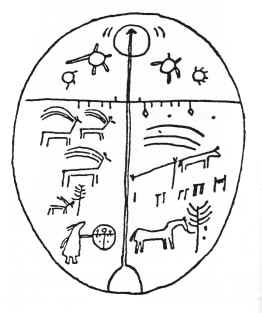The World Tree, Mircea Eliade, and Shamanism
The work of Mircea Eliade brought shamamism into consciousness in the 20th century.
This is some of the material from Shamanism: Archaic Techniques of Ecstasy(1964): .
The writer who approaches shamanism as a psychologist will be led to regard it as primarily the manifestation of a psyche in crisis or even in retrogression; he will not fail to compare it with certain aberrant psychic behavior patterns or to class it among mental diseases of the hysteroid or epileptoid type. We shall explain why we consider it inacceptable to assimilate shamanism to any kind of mental disease. But one point remains (and it is an important one), to which the psychologist will always be justified in drawing attention: like any other religious vocation, the shamanic vocation is manifested by a crisis, a temporary derangement of the future shaman’s spiritual equilibrium. All the observations and analyses that have been made on this point are particularly valuable They show us, in actual process as it were, the repercussions, within the psyche, of what we have called the “dialectic of hierophanies”–the radical separation between profane and sacred and the resulting splitting of the world.
….
A sociological analysis of the myths of the First Shaman will elicit revealing indications concerning the exceptional position of the earliest shamans in certain archaic societies.
Since the beginning of the century, ehtnologists have fallen into
the habit of using the terms, “shaman,” “medicine man,” “sorcerer,” and “magician” interchangeably to designate certain individuals possessing magico-religious powers and found in all “primitive” societies. By extension, the same terminology has been applied in studying the religious history of “civilized” peoples, and there have been discussions, for example, of an Indian, an Iranian, a Germanic, a Chinese, and even a Babylonian “shamanism” with reference to the “primitive” elements attested in the corresponding religions. For many reasons this confusion can only militate against any understanding of the shamanic phenomenon. If the word “shaman” is taken to mean any magician, sorcerer, medicine man, or ecstatic found throughout the history of religions and religious ethnology, we arrive at a notion at once extremely complex and extremely vague…
For of course, the shaman is also a magician and medicine man; he is believed to cure, like all doctors, and to perform miracles of the fakir type, like all magicians, whether primitive or modern. But beyond this, he is a psychopmp, and he may also be preist, mystic and poet…
Shamanism in the strict sense is pre-eminently a religious phenomenon of Siberia and Central Asia. The word comes to us, through the Russian, from the Tungusic “saman.”
…
A similar distinction is also necessary to define the shaman’s
relation to “spirits.” All through the primitive and modern worlds we find individuals who profess to maintain relations with “spirits,” whether they are “possessed” by them or control them. Several volumes would be needed for an adequate study of all the problems that arise in connection with the mere idea of “spirits” and of their possible relations with human beings; for a “spirit” can equally well be the soul of a dead person, a “nature spirit, a mythical animal, and so on. But the study of shamanism does not require going into all this; we need only define the shaman’s relation to his helping spirits. It will easily be seen wherein a shaman differs from a “possessed” person, for example; the shaman controls his “spirits,” in the sense that he, a human being, is able to communicate with the dead, “demons,” and “nature spirits,” without thereby becoming their instrument.

